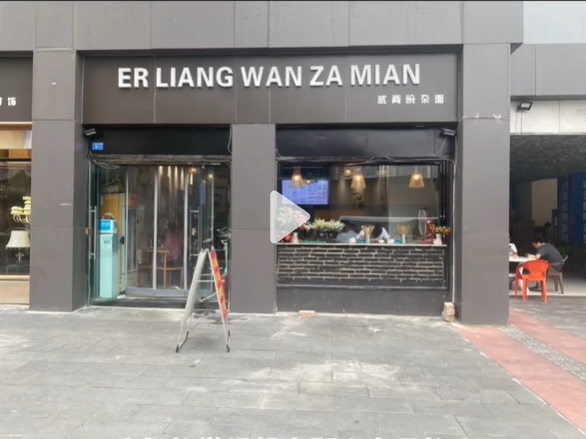Huge Pinyin on storefronts in Sichuan
« previous post | next post »
Video from Douyin:
Post by Mark Swofford on Pinyin News: "Big Pinyin on Chengdu Storefronts" (6/30/22):
Fan Yiying and Gu Peng have posted a story at Sixth Tone that is both surprising and not surprising at all: State Media Criticizes Chengdu Shop Signs in Romanized Chinese.
The main points I’d like to make about this are:
-
- Word-parsing matters.
- Hundreds of millions of people in China use Hanyu Pinyin on a daily basis but still do not know how Pinyin is meant to work as an orthographic system.
- The government of China, though it needs Pinyin, is in many ways hostile to it.
- The fonts available for writing the Roman alphabet (and thus Pinyin) far exceed those for writing Chinese characters, so there is nothing in the least artistically limiting about Pinyin per se. (Whether Chinese characters are intrinsically more beautiful than the Roman alphabet is another matter.)
Pinyin in your face.
Selected readings
The number of Language Log posts about practical applications of Hanyu Pinyin is so large that it would futile to attempt to list them all. Here are three:
- "Diglossia in action" (18/15/19)
- "Pinyin for the Prez" (10/25/18)
- "Phonetic annotation of Chinese characters" (10/15/12)

Victor Mair said,
July 2, 2022 @ 9:02 am
The lady speaking rapid Sichuanese in the video is one of the owners who was required by local authorities to use the Latin alphabet for her shop sign as part of a “unified beautification” initiative (see here).
Victor Mair said,
July 2, 2022 @ 9:35 am
Also from the Douyin channel, here is an ad for an electronic teaching device in the form of a book that introduces students to 1,600 characters. Each character comes with Pinyin Romanization, two examples of usage, and a button that can be pushed to provide the sound of the pronunciation.
Philip Taylor said,
July 2, 2022 @ 10:43 am
I understand why the local authorities might seek to encourage the use of pinyin on shop fronts with an international event such as the World University Games on the near horizon, but I also agree with the local rules in Sichuan province which emphasise that “when it is necessary to use pinyin, it can be added underneath Chinese characters”. But pinyin without tone markers is, for me, a no-no — how can those who write the signs even hope that a Westerner will correctly pronounce the name of the shop if he or she is given no guidance whatsoever regarding the correct tone contours ?
Thomas said,
July 2, 2022 @ 12:15 pm
The convenience for the international friends might not be so helpful after all. And not for the missing tone markers! People who know how to read tone markers might already be able to infer what jiudian means just from context, and read it correctly. After all, pinyin tone markers are mostly superfluous outside of the classroom. The real international friends will in any way struggle with what is gibberish to them, and will only read and remember it well enough to badly communicate this among their tourist bubble. No local will understand foreigners reading the signs.
Philip Taylor said,
July 2, 2022 @ 1:20 pm
With respect, Thomas, I disagree. Given Hao qi deng shi, Kai bing qing ju jiu dian, Er liang wan za mian, I would recognise wan and mian as "bowl" and "noodle" respectively, would be confused as to which (or whether both) of Er and liang meant "two", and would struggle with the rest. But with tone-markers present I would be able to pronounce all three correctly — in the absence of tone markers, I would almost certainly make a number of egregious errors.
Ben said,
July 3, 2022 @ 6:38 am
I don't think this was done for comprehension purposes. Probably just aesthetic ones. Pinyin looks western/modern, but is still intelligible as Chinese. This type of signage is all over the place in China but I think people don't pay much conscious attention to it. A Chinese teacher (who was teaching students pinyin!) didn't believe me when I tried to say this stuff was prevalent in our city, until I simply went downtown and took a few photos to show them.
Mark S. said,
July 4, 2022 @ 8:31 pm
@Ben and others:
I'd be interested in posting more photos of signage in China with Pinyin. Please send me some interesting ones if you get a chance. Thanks.